Every year at PittCon, one analytical technique seems to be ‘of the moment’. In 2016, it was mass spectroscopy, while in 2017, two techniques occupied centre stage: Raman spectroscopy and nuclear magnetic resonance (NMR), with new, easy-to-use and smaller instruments to the fore, matched by the emergence of the digital cloud as a data storage and transfer medium.
Raman spectroscopy
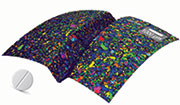
WITec also presented a new operating concept, Suite FIVE, an integrated tool for data acquisition, evaluation and post-processing that enables researchers to quickly extract key information from their experiments.
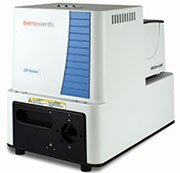
From Metrohm, the new Mira M-3 handheld Raman spectrometer, brings the controls of a benchtop instrument to a handheld platform, allowing full adjustment of laser power, integration time, and data processing through customisable operating procedures. The user is able to save a method and distribute it to one or more instruments for the highest possible accuracy and reproducibility. New Smart Tip sampling accessories match the sampling device to the analysis method. A lockout feature verifies the correct sampling device, ensuring more reliable sampling and improved measurement accuracy.
More for NMR
There are a number of biophysical methods used for fragment screening from which NMR is the most popular one, followed by Surface Plasmon Resonance (SPR). Screening by NMR allows the quality control of the screening library, making NMR superior to other methods like SPR or thermal shift. A new NMR Fragment-based Screening (FBS) solution is built into Bruker’s TopSpin software and is described as streamlining FBS data handling and analysis for more productivity.
Meanwhile, Bruker’s PotencyMR is said to provide a cost-effective ‘one-stop’ NMR approach for determining the potency of drugs, including potency calculation, identification, residual solvent and water content in one single experiment. With a streamlined, easy-to-use, robust workflow from sample submission to report.
Also from Bruker, specifically for biopharma R&D and QC, BioPharma Compass 2.0 software includes wizard-driven workflows for monoclonal antibody and antibody-drug conjugates (ADC) characterisation, intact mass analysis, sequence errors, truncations, substitutions, and key post translational modifications, such as glycosylation. Data can be unified from the most relevant and complementary MS methods for the characterisation of biologics, MALDI-TOF/TOF and ESI-UHR-QTOF. A new 3D feature finder, 21CFR Part 11 compliance, and integration of UV data are included.
Food analysis continues to be a high priority for instrument developers. Based on a collaboration with Unilever, the Bruker’s minspec G-Var bench-top TD-NMR solution for the fast determination of droplet size distribution in food emulsions enables the analysis of margarine, spreads, butter and mayonnaise as well as salad dressing and soft cheeses. A new sample automation controls tempering times to deliver results in accordance with international standard methods.

Spectroscopy
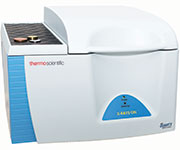
The Thermo Scientific Nicolet iN5 FTIR microscope made its debut at Pittcon, is designed as a simple, cost-effective solution for particulate identification in the lab. It features an optical setup that allows users to simultaneously examine a sample and collect chemical information. A large field of view is intended to make it easier to locate and target contaminants, and it has the spatial resolution required for accurate chemical analysis. It also uses Thermo’s OMNIC software. Its applications include food safety, for the detection of contaminants in food products to ensure safety for human consumption; manufacturing, for the identification and analysis of defects in plastics, polymers, paints and other industrial uses; and academia, where laboratories require low-cost options for innovative technology that prepare students for complex challenges once they enter the workforce.
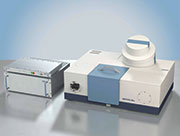
Bruker also introduced a new portfolio of microESR spectrometers. These affordable benchtop instruments offer research-grade results in a compact footprint for applied and industrial applications where robustness and ease-of-use are important, and can also be used as EPR teaching tools in academic laboratories
|
Curiosity just keeps on going |
Chromatography & MS
All this is not to say that mass spectroscopy (MS) has fallen out of favour, especially when coupled with UHPLC systems. From Bruker, the Elute series of UHPLC systems provides outstanding reproducibility for small molecule LC-MS/MS analysis in food and forensic testing, clinical research and chemistry. The series ranges from UHPLC to high-throughput Elute HT systems with a PAL3 auto sampler. The Elute OLE offers automated on-line pre-concentration for water analysis or the clean-up of urine samples.
Metrohm launched the Eco IC, a cost-effective new ion chromatograph designed for routine analysis of anions, cations and polar substances in price sensitive markets such as environmental testing and higher education. Complementing the launch is a new line of columns ideal for common anion analysis by various EPA methods. As consumables such as columns have the greatest impact on lab operating costs, the columns have been designed to deliver high performance, longevity and budget-friendly pricing. An optional auto sampler offers automated analysis of up to 36 samples.
Also from Metrohm, the new Process Ion Chromatograph is a flexible online solution for continuous monitoring of ionic compounds in liquid media. Able to analyse ionic compounds from parts per billion to percent concentrations, it is designed for autonomous operation and its rugged enclosure is designed to IP65 specifications, making it ideal for any process environment. Productivity is improved by the ability to connect the instrument to as many as 20 monitoring locations for time-saving sequential analysis at multiple points in the process.
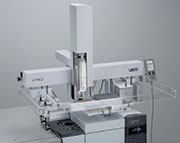
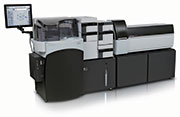
The latest version of the Thermo Scientific AppsLab library of analytical applications is a searchable online repository that provides users with easy access to comprehensive chromatography and MS application expertise. Comprised of detailed analytical methods, chromatographs and related compound information, the rapidly growing library now contains more than 1,880 applications and more than 375 ready-to-use e-workflows for the Thermo’s Chromeleon chromatography data system.
Meanwhile, Waters launched Empower Cloud, a cloud deployable, compliance ready enterprise Chromatography Data Software (CDS), coupled with Amazon Web Services, said to be the world’s most comprehensive and broadly adopted cloud. Empower Cloud utilises a single CDS platform across business partner relationships with, for example, contract research and manufacturing organisations (CROs and CMOs). This improves consistency, quality and compliance, while also realising the benefit of collaborations and protecting their intellectual property.
Shimadzu introduced the TQ8050 triple quadrupole gas chromatograph mass spectrometer. The instrument’s newly designed high-sensitivity detector is said to offer an instrument detection limit approximately 10 times more sensitive than the current system, enabling reliable detection of femtogram-level (parts per quadrillion) concentrations of trace components. Coupled with a new turbomolecular pump and high-efficiency collision cell, improved long-term stability due to high amplification levels and reduced noise levels, it is said to be ideal for the analysis of extremely small quantities of dioxin in foods and the environment, POPs components, endocrine disrupting chemicals, impurities in pharmaceuticals, and banned drugs in hair samples.
Smart MRM and Smart Database enable the TQ8050 to achieve high accuracy from method creation to data analysis. With the Smart MRM function, analysts can automatically create methods with which data is acquired only during the elution time of the target components. Smart Database provides preregistered information about optimal transitions, meaning optimised methods can be created without having to evaluate analytical conditions.
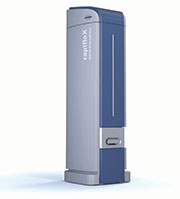
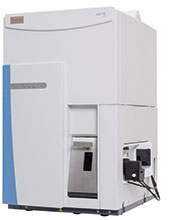
multi-element experiment so that laboratories can keep their existing workflow as well as add new
capabilities over time.
When combined with Thermo’s Qtegra intelligent scientific data software, an intuitive user Interface, and the Reaction Finder tool, researchers can reduce time-consuming method development.
The system requires minimal user maintenance and includes QCell flatapole technology, a small volume
collision/reaction cell with flatapole rods, and a dedicated gas distribution unit for lab safety and maximum flexibility. It also features self-aligning sample introduction components for reproducibility and an ergonomic benchtop design.
The Pegasus GC-HRT 4D, from LECO, is said to combine the industry standard for GCxGC with the highest performance time-of-flight mass spectrometer on the market. It is paired with LECO’s ChromaTOF-HRT software with high resolution deconvolution, which is tailored to get the most out of high resolution data using NIST and Accurate Mass Libraries, enabled by features such as pseudo-molecular ions via chemical ionisation, retention time matching, isotope patterns, and mass accuracy of deconvoluted fragments. With mass accuracies of 1 ppm and chromatographic peak capacity claimed to be at least twice greater than available elsewhere in the marketplace, the Pegasus GC-HRT 4D is described as the solution to winning the fight against coelution and comprehensively characterising even the most complex samples.
Finally, Waters introduced the METLIN MS/MS Library for Progenesis QI, which offers implementation of a METLIN library directly within the software for use with Waters’ high resolution MS systems. This library plug-in is said to enhance metabolomics researchers’ ability to confidently identify metabolites in complex samples using mass spectrometry.
Calorimetry & thermogravimetric analysis
TA Instruments, a subsidiary of Waters, introduced the SDT 650 discovery simultaneous differential scanning calorimeter/thermogravimetric analyser, which is said to deliver unprecedented performance in sensitivity, baseline stability, temperature and atmosphere control. It is claimed to be the first simultaneous DSC/TGA to incorporate TA’s most advanced techniques like Modulated DSC, Modulated TGA, and Hi-Res TGA - opening up new areas of research, and the only system capable of simultaneous TGA/TGA measurement of the change in energy as a function of time and temperature, while measuring sample weight changes. With a temperature range of ambient to 1500°C, a wide variety of materials can be characterised in both research and production control environments. An optional 30-position, linear autosampler is also available.
TA also introduced a new line of thermogravimetric analysers, the Discovery TGA 5500, 550 and 55, which feature an all new system design resulting in unprecedented performance in sensitivity, temperature control, atmosphere control and baseline drift.
In the lab
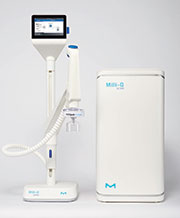
And as well as lab ware, is there a laboratory that doesn’t need access to pure water?
Pure water is a crucial component in an estimated 99% of all laboratory experiments, and without it results can be compromised, equipment can be damaged, and productivity reduced. To meet that need, therefore, Millipore Sigma launched the Milli-Q IQ7000 laboratory water purification system, which uses mercury-free UV lamps for sterilization, and cartridges that are 33% smaller than those currently used, and in the US at least, recyclable. Energy usage is also reduced due to the introduction of a ‘hibernation’ mode. With up to four Q-pod dispensers/system, drop-by-drop water delivery can be achieved at flowrates up to 2L/minute, coupled with the ability to connect to lab networks for data integration.
|
Going to pot |

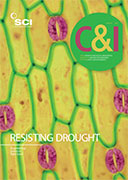
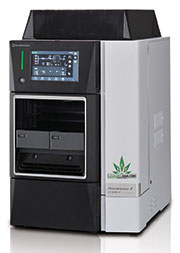 Marijuana, pot or cannabis, or rather various cannabinoids, is hitting the news again, not for its use as an illegal drug, but as a medicinal treatment for a variety of illnesses from multiple sclerosis to cancer. It has been medicinally legalised in half of the US states, and its ‘recreational use’ has been legalised in eight US states including Colorado, all the Pacific Coast states and Washington DC. However, it still remains illegal at the federal level as a Schedule 1 substance in the eyes of the US Drug Enforcement Agency.
Marijuana, pot or cannabis, or rather various cannabinoids, is hitting the news again, not for its use as an illegal drug, but as a medicinal treatment for a variety of illnesses from multiple sclerosis to cancer. It has been medicinally legalised in half of the US states, and its ‘recreational use’ has been legalised in eight US states including Colorado, all the Pacific Coast states and Washington DC. However, it still remains illegal at the federal level as a Schedule 1 substance in the eyes of the US Drug Enforcement Agency.


